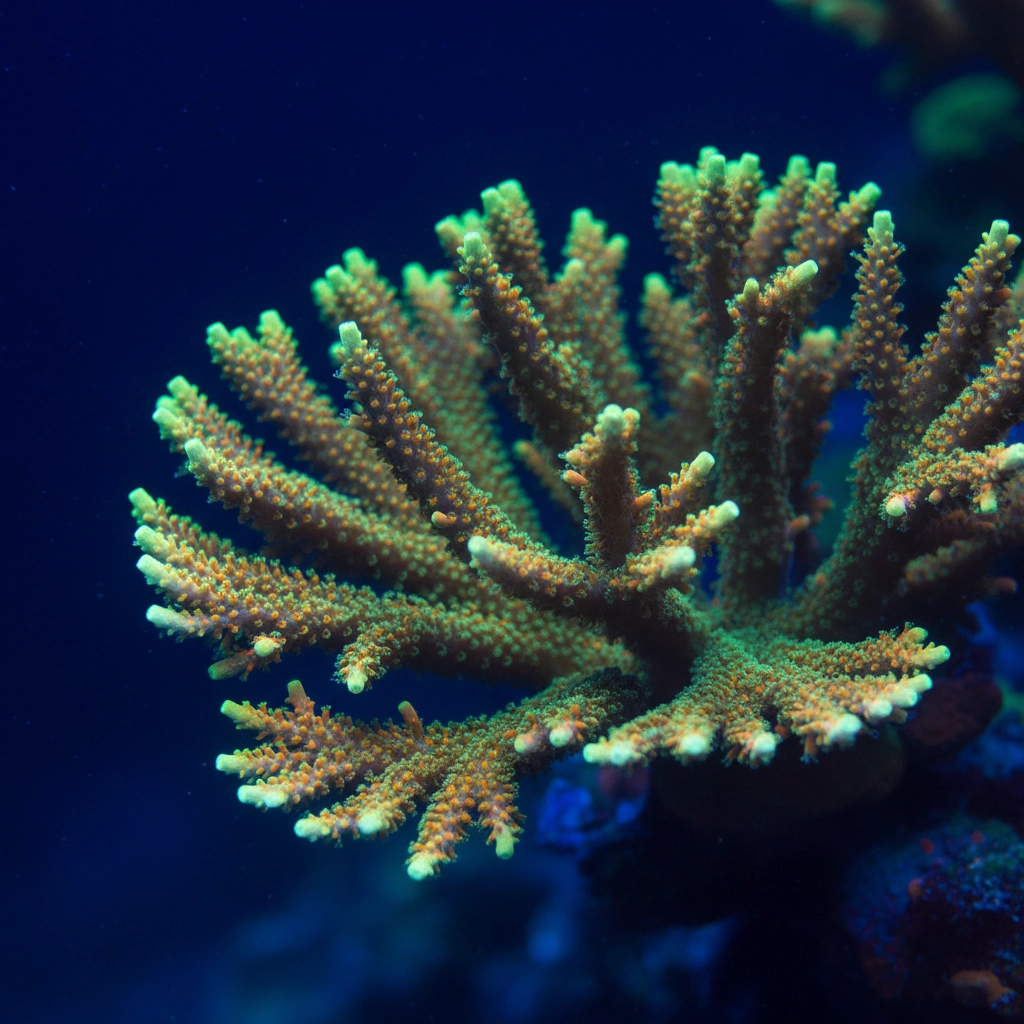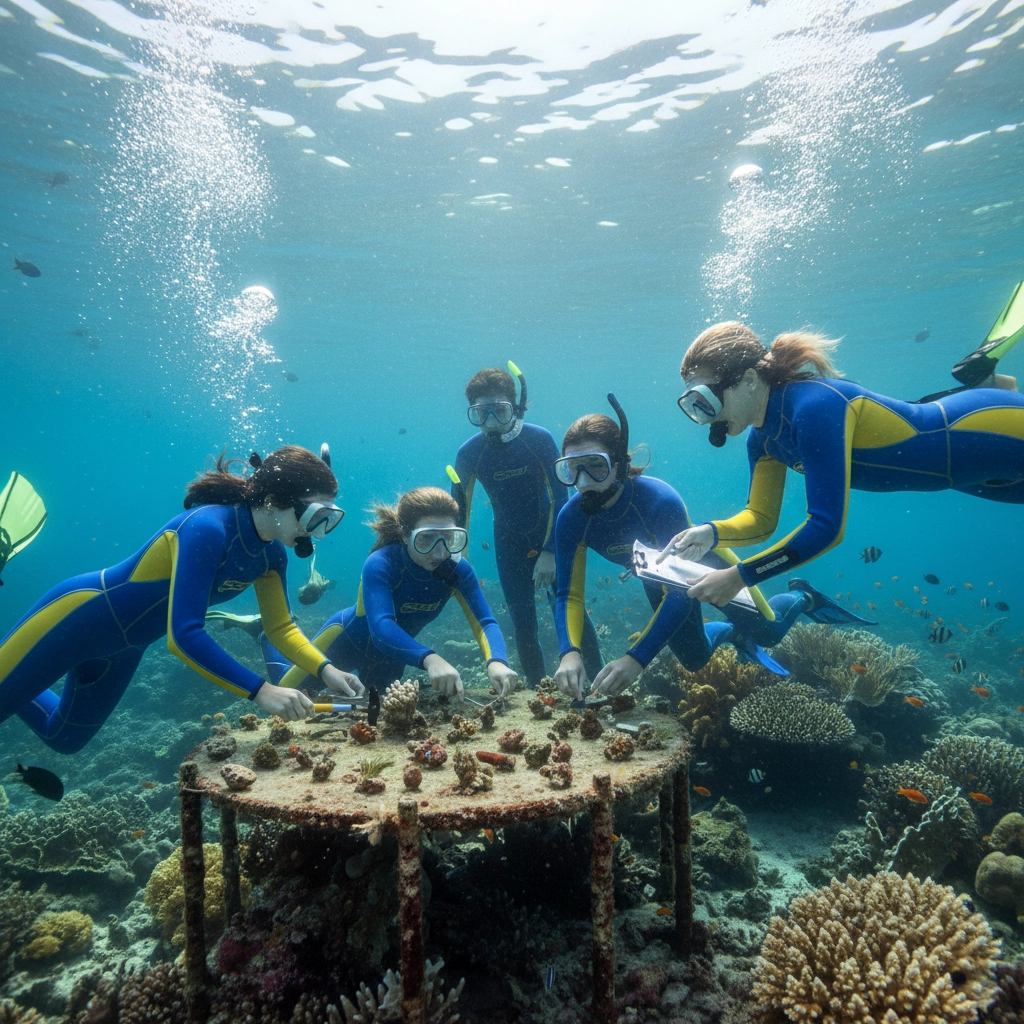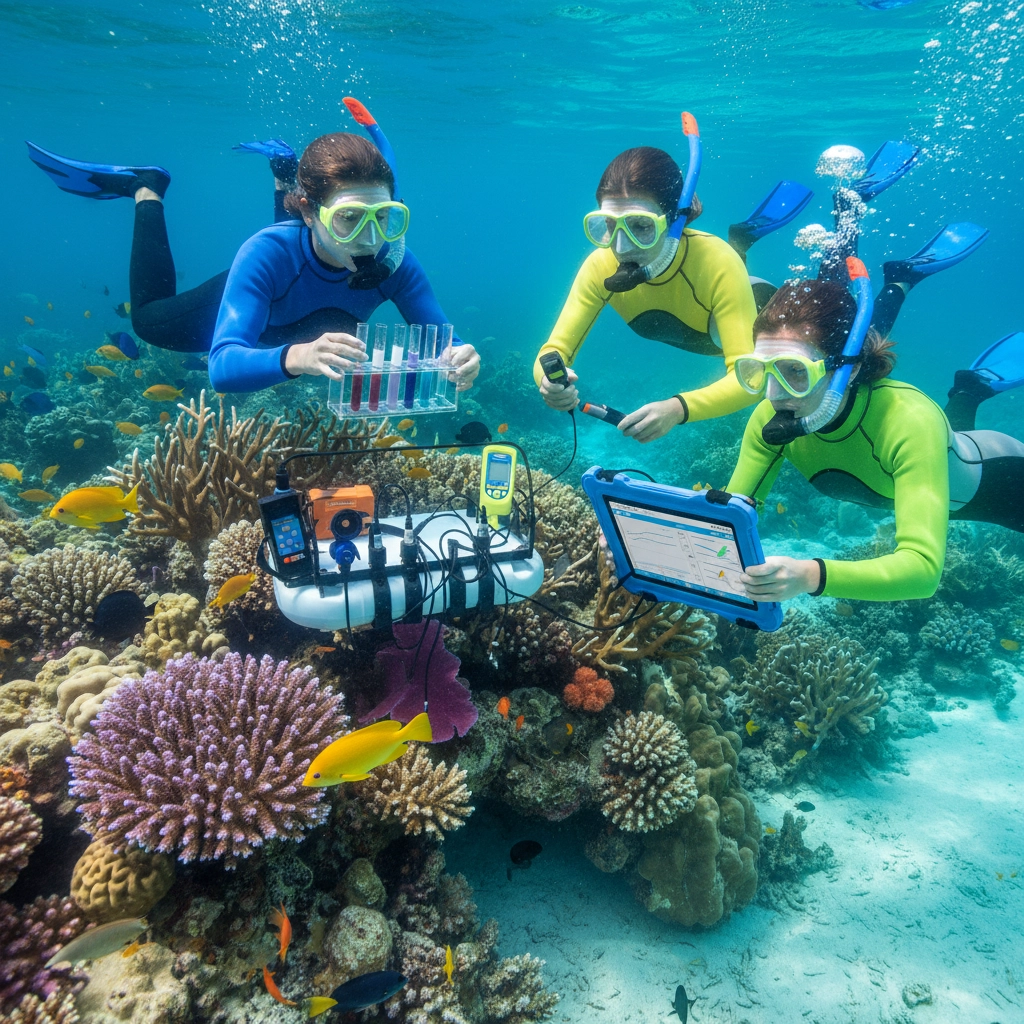Coral Reef Restoration, Glowing Elkhorn Coral, and Student Involvement
- Caleb Mullenix
- Oct 19
- 5 min read
Providing students with authentic, hands-on experiences in marine conservation represents one of the most powerful educational opportunities available in today's environmental science curriculum. The Florida Keys offer an unparalleled living laboratory where students can engage directly with coral reef restoration projects, study the remarkable phenomenon of glowing elkhorn coral, and contribute meaningfully to critical conservation efforts that will shape the future of our ocean ecosystems.
Understanding Coral Reef Restoration in the Florida Keys
The Florida Keys National Marine Sanctuary serves as the epicenter of the world's most advanced coral restoration initiatives. Begin by understanding that coral reefs face unprecedented threats from climate change, ocean acidification, and human activities, making restoration efforts absolutely critical for ecosystem survival.
Current restoration projects in the Keys utilize multiple scientifically-proven techniques that students can observe and participate in directly. The Coral Restoration Foundation operates the largest coral nursery program in the world, featuring innovative Coral Trees™ that function as underwater gardens where threatened coral species grow to transplantable size.

Students participating in these programs learn three primary restoration methods:
Coral Fragmentation and Transplantation: Students observe how marine biologists carefully break healthy coral colonies into fragments, which are then secured to restoration sites using specialized epoxy. This technique proves particularly effective for fast-growing species like staghorn and elkhorn coral.
Nursery-Based Propagation: Participants witness firsthand how coral fragments are raised in protected nursery environments before being transplanted to degraded reef sites. Students learn to identify healthy coral growth patterns and understand the meticulous care required for successful propagation.
Genetic Rescue Techniques: Advanced students can explore how researchers collect coral spawn during natural spawning events, raising coral larvae in laboratory settings before introducing genetic diversity back to wild populations.
The Fascinating World of Glowing Elkhorn Coral
Elkhorn coral exhibits one of nature's most captivating phenomena: biofluorescence. Under ultraviolet light, these corals emit stunning green, orange, and red glows that serve multiple biological functions students can investigate during nighttime diving expeditions.
Research indicates that coral fluorescence functions as a sophisticated survival mechanism. The fluorescent proteins act as natural sunscreens, protecting the coral's symbiotic algae from harmful UV radiation. Additionally, this glowing serves as a communication system between coral polyps and helps attract beneficial microorganisms essential for coral health.

Students studying elkhorn coral restoration learn that these magnificent creatures represent a conservation success story in progress. Following the devastating 2023 mass bleaching event, nearly 1,050 elkhorn coral juveniles were successfully rescued and transported to restoration sites throughout the Keys. This coordinated effort involved multiple organizations, including NOAA, the Florida Institute of Oceanography, and the Coral Restoration Foundation.
Encourage students to understand that elkhorn corals serve as ecosystem engineers, creating three-dimensional habitat structures that support hundreds of fish species and provide critical coastal protection from storms and hurricanes. Their rapid growth rates and branching architecture make them ideal candidates for restoration efforts.
Student Involvement and Hands-On Learning Opportunities
Educational expeditions to the Florida Keys provide students with unprecedented opportunities to contribute directly to active restoration projects. Begin by preparing students for meaningful participation through comprehensive pre-trip education covering coral biology, restoration techniques, and marine ecosystem dynamics.
Students can engage in multiple hands-on activities that directly support restoration goals:
Coral Nursery Maintenance: Under expert supervision, students learn to clean algae from coral fragments, measure growth rates, and document coral health using standardized scientific protocols. This work provides essential data for restoration scientists while teaching students proper scientific methodology.
Reef Monitoring and Data Collection: Students conduct systematic reef surveys, photographing coral colonies, identifying species, and recording environmental conditions. This citizen science data contributes directly to ongoing research while developing students' observation and documentation skills.
Coral Transplantation Activities: Advanced students can assist with coral transplantation procedures, learning to use specialized tools and techniques while understanding the precise requirements for successful coral establishment.

Water Quality Testing: Students collect and analyze water samples, measuring parameters such as pH, temperature, salinity, and nutrient levels. This data helps scientists understand environmental factors affecting coral health and restoration success.
Educational Benefits and Learning Outcomes
Participation in coral restoration projects provides students with comprehensive learning experiences that integrate multiple scientific disciplines. Ensure that students understand the interdisciplinary nature of marine conservation work, which combines biology, chemistry, physics, and environmental science.
Students develop critical thinking skills by analyzing complex ecological relationships between corals, fish, and other reef organisms. They learn to recognize cause-and-effect relationships in ecosystem dynamics and understand how human activities impact marine environments.
The hands-on nature of restoration work teaches students proper scientific methodology, including hypothesis formation, data collection, analysis, and conclusion drawing. Students practice using specialized scientific equipment and learn to maintain detailed field notes and data records.
STEM Integration Opportunities:
Mathematics applications through growth rate calculations and statistical analysis
Technology integration via underwater photography and GPS mapping
Engineering concepts through nursery design and installation
Chemistry applications in water quality analysis

Preparing Students for Marine Conservation Work
Successful participation in coral restoration projects requires thorough preparation and adherence to strict safety protocols. Begin preparation weeks before departure by ensuring all students understand diving safety requirements and environmental protection principles.
Essential Preparation Steps:
Safety Considerations: Maintain constant supervision ratios appropriate for marine environments. Ensure all equipment meets safety standards and conduct daily equipment checks. Establish clear communication protocols and emergency procedures with local marine safety authorities.

Long-Term Impact and Career Connections
Participation in coral restoration projects frequently inspires students to pursue careers in marine science, environmental conservation, and related fields. Create opportunities for students to connect with working marine biologists, restoration specialists, and conservation professionals during their expedition.
Encourage students to maintain ongoing connections with restoration organizations through volunteer opportunities, internship programs, and continued education initiatives. Many students who participate in these programs return as adult volunteers or pursue advanced education in marine sciences.
The experience provides students with authentic examples of how scientific knowledge translates into real-world conservation action. Students learn that individual efforts can contribute to larger conservation goals and understand their potential role in addressing global environmental challenges.
Document student experiences through detailed journals, photography, and video documentation that can be shared with school communities and used to inspire future student participation in conservation programs.
Participating in coral reef restoration projects in the Florida Keys provides students with transformative educational experiences that combine rigorous scientific learning with meaningful conservation action. These programs develop critical thinking skills, foster environmental stewardship, and inspire the next generation of marine conservation leaders. Through careful preparation, expert supervision, and authentic engagement with restoration work, students gain invaluable insights into the complex challenges facing our ocean ecosystems while contributing directly to their protection and recovery.



Comments